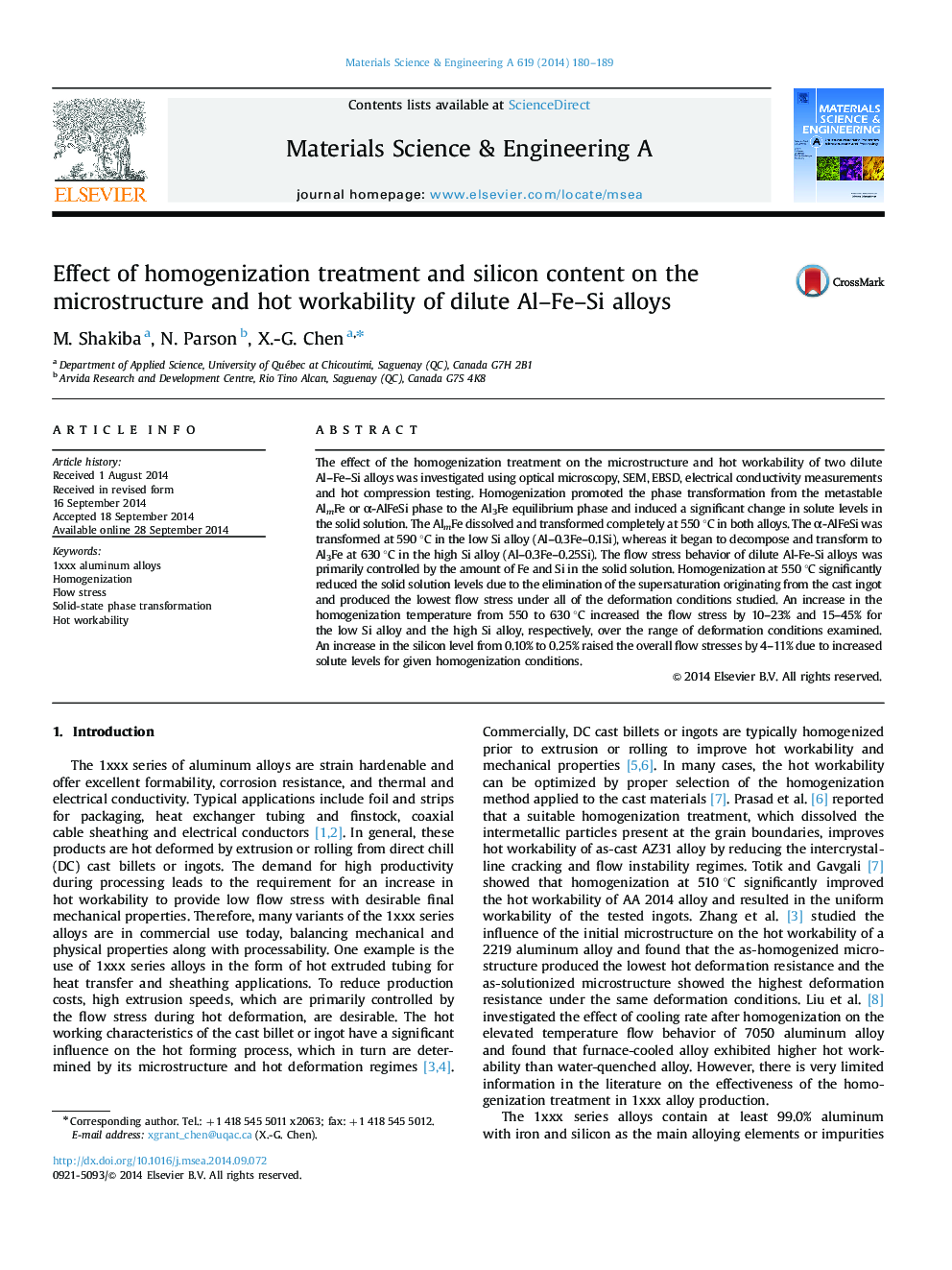| Article ID | Journal | Published Year | Pages | File Type |
|---|---|---|---|---|
| 1574676 | Materials Science and Engineering: A | 2014 | 10 Pages |
The effect of the homogenization treatment on the microstructure and hot workability of two dilute Al–Fe–Si alloys was investigated using optical microscopy, SEM, EBSD, electrical conductivity measurements and hot compression testing. Homogenization promoted the phase transformation from the metastable AlmFe or α-AlFeSi phase to the Al3Fe equilibrium phase and induced a significant change in solute levels in the solid solution. The AlmFe dissolved and transformed completely at 550 °C in both alloys. The α-AlFeSi was transformed at 590 °C in the low Si alloy (Al–0.3Fe–0.1Si), whereas it began to decompose and transform to Al3Fe at 630 °C in the high Si alloy (Al–0.3Fe–0.25Si). The flow stress behavior of dilute Al-Fe-Si alloys was primarily controlled by the amount of Fe and Si in the solid solution. Homogenization at 550 °C significantly reduced the solid solution levels due to the elimination of the supersaturation originating from the cast ingot and produced the lowest flow stress under all of the deformation conditions studied. An increase in the homogenization temperature from 550 to 630 °C increased the flow stress by 10–23% and 15–45% for the low Si alloy and the high Si alloy, respectively, over the range of deformation conditions examined. An increase in the silicon level from 0.10% to 0.25% raised the overall flow stresses by 4–11% due to increased solute levels for given homogenization conditions.
